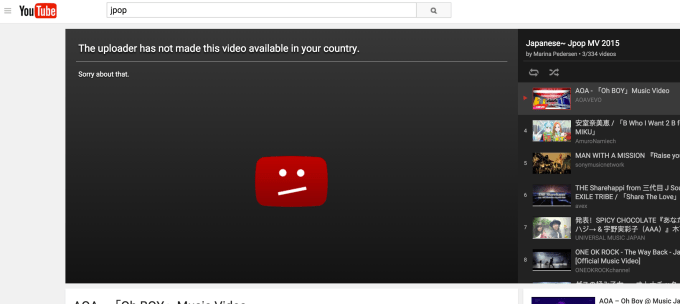All of the content across ESPN’s top channels is now gone from YouTube, following the video removals that began last week, in the wake of the YouTube Red deal. Though parent company Disney has a deal with YouTube for its new subscription service, the sports network can’t participate due to rights issues surrounding its content. And because YouTube’s creators have to agree to participate in YouTube Red or see their videos pulled from YouTube, the majority of ESPN’s content quickly disappeared.
However, at the time of writing, it seemed some of ESPN’s older content would remain on YouTube.
For instance, though most of the current videos on ESPN’s main channel were gone, the channel still offered video clips from 2012 and earlier. Other channels saw a similar culling, but there was hope that at least ESPN’s historic content would be spared from removals.
That, apparently, is not the case. As of today, the majority of ESPN’s over a dozen channels now have no videos at all. That list includes ESPN, ESPN1stTake, SportsNationESPN, TheNBAonESPN, His And Hers, GameDayESPN, ESPNU, and others. Only X-Games and Nacion ESPN are still live.
When you visit these channels now, a message simply reads “This channel has no content.”
These were no small properties on YouTube, mind you. ESPN’s flagship channel, for example, had over 1.6 million subscribers. Others had tens of thousands or even hundreds of thousands of subscribers.
YouTube’s argument is that in order to offer the premium features that come with YouTube Red – offline access, no commercials, background play – it couldn’t have just some of its creator community participating and others choosing not to. It would mar the end user experience to come across select videos and channels featuring commercials, after you’ve paid for a commercial-free experience.
That’s a problem other previously ad-supported services also face today. For example, when Hulu rolled out its ad-free tier earlier this fall, it couldn’t negotiate the rights to ditch the ads on around a half dozen high-profile shows. In those cases, Hulu displays a message that informs viewers that the selected content is not available as part of Hulu’s ad-free service and that a commercial will play both before and after the program.
YouTube, on the other hand, decided to go with a more strong-arm approach. If the content creator doesn’t agree to join YouTube Red’s subscription service, then they can’t be on YouTube at all. Period. Their ad-supported videos available to the non-subscribers also must go.
This all-or-nothing stance has left at least some creators feeling coerced into joining the new Red service, it’s been reported.
It’s to YouTube’s advantage that it has the trust of many within the creator community for now, as others seem willing to give the company the benefit of the doubt that the additional subscription revenue will boost their bottom lines. YouTube has said that 99 percent of creators signed the new terms and joined Red. Not that they had much choice.
Still, such a significant shift in the way YouTube runs its business is not without some fallout. In addition to ESPN’s departure, some Japanese gaming videos are also being pulled in the U.S. due to disputes over the YouTube Red agreement. Others report that various music videos like those in the vocaloid or jpop genres are also being impacted by the deal’s terms.

The problem in these cases is that the creators want to monetize their videos via ads and haven’t signed the subscription deal with YouTube Red. That means their videos will be available in other non-U.S. markets where they’re ad-supported, but are gone from the U.S. version of YouTube.
ESPN has not revised its statement regarding the larger content removal, noting again that:
“ESPN is not currently part of the Red service. Content previously available on the free YouTube service will be available across ESPN digital properties.”































Comment